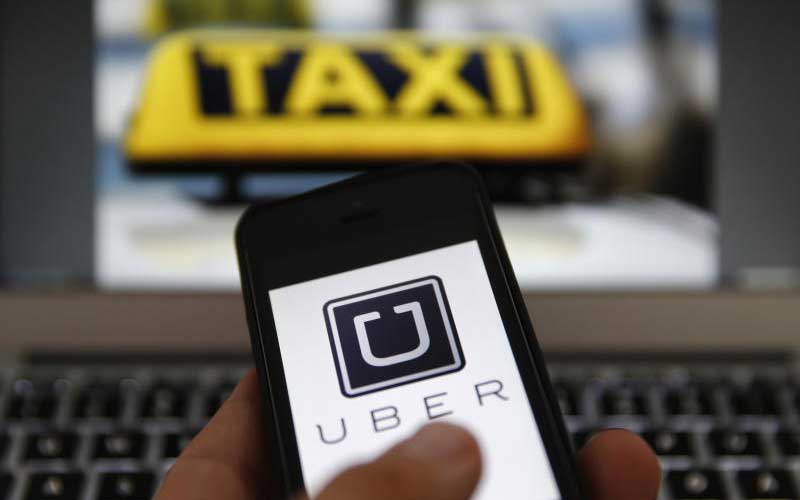
After riding roughshod over traditional taxis in the last four years, the wheels have started coming off for ride-sharing apps.
Bolt, originally Taxify, has expunged from its dashboard of products the popular economy package, Bolt Go, after drivers took to the streets protesting low returns.
It is a decision that has been welcomed by drivers but one which will rub riders the wrong way. The latter had been attracted to Bolt by its low cost, and had as a result flocked to the cheap taxis in droves.
The drivers are proud of the progress they have made so far.
“Sasa ile imebaki ni Uber (now the only one remaining is Uber),” says a Bolt driver as we drive from Nairobi’s Central Business District to one of the middle class estates in the city.
They have hatched a plan against Uber too, he tells me. “Every Saturday, we are going to go slow. Of course, there are a few drivers who will work but they will be a handful, so triggering a price surge,” he tells me.
Surge pricing is simply the adjusting of prices to match driver supply to rider demand at any given time.
“So for a trip that a customer would have paid Sh200, it increases to Sh800. If this goes on for a number of weekends, the customers will be discouraged and Uber will have to talk to us,” he says.
Uber and Taxify had not responded to our queries by the time of going to press.
David Muteru, the chairman of the Digital Taxi Association of Kenya told Weekend Business in a text that on Monday there will be an inter-ministerial meeting following the Senate hearing.
The drivers’ representatives will also be in attendance, he said.
“From this meeting we aim to canvass for permanent regulations in this industry, not piecemeal changes,” said Mr Muteru of the changes that have been effected by Bolt.
They want the pricing to be done by independent bodies, not drivers or app owners.
“What we seek on pricing models is a minimum entry point where no app company can go below. This will be dependent on professional calculations on running costs and margins,” Muteru said.
Stay informed. Subscribe to our newsletter
Bolt used to charge Sh22 per kilometre and Sh4 per minute under the Go package. This has gone up to Sh27 per kilometre and Sh4 per minute, while Safaricom’s Little Ride is at Sh30 per kilometre and Sh4 per minute.
Uber Chap Chap is Sh16 per kilometre and Sh4 per minute.
But Uber, which Muteru says refused to accede to their demands, is the Trojan horse.
“Riders will find Bolt’s price of Sh27 unsustainable, forcing it to match Uber’s price,” reckoned Muteru.
It is neither the fault of Uber drivers nor the technology company. It has something to do with Kenyans’ peculiarity, as Interim Safaricom Chief Executive Michael Joseph once put it.
In 2016, then managing director of East Africa Breweries Ltd Charles Ireland said: “I have never encountered a market as price-sensitive as this in the countries I have worked in, and they are many.”
By and large, the choice for Kenyans is always between an expensive product and a cheaper alternative.
XN Iraki, a lecturer at the University of Nairobi, says Kenya is a price sensitive market because majority of the people are low-income earners.
“One hundred shillings makes more sense to a poor man than an affluent man. Even the affluent have memories of scarcity,” he told Weekend Business.
“This price sensitivity has made bargaining very popular in Kenya. We bargain for anything,” says Prof Iraki, noting that in the process Kenyans might have learned to accept low quality in the name of prices.
In 2017, when Bolt was the new kid on the block, this reporter asked the Estonian firm whether the strategy was sustainable.
“Our business is sustainable in the long run. The business model we employ to secure driver earnings and achieve market growth has been tested and tried in different cities across the world and it has worked,” was the company’s response then.
They were playing the price card. It was easier for them, as long as they offered Kenyans cheap rides.
But they would later raise the price to factor in their commission, jolting the drivers.
And before long, Uber also brought down its prices, with the drivers caught up in the price war that ensued.
It reached a point where they could not go any further down in terms of prices, and so the battle shifted to innovation as the app owners came up with budget options. Uber unveiled Uber Chap Chap.
Uber Chap Chap rode on Suzuki Alto 800, a tiny car whose 800cc fuel consumption is comparable to the three-wheeled tuk-tuk that helps people move within the heart of Nairobi.
It became an immediate sensation among Kenyan riders.
Bolt, then Taxify, responded with Go. It was a budget-friendly option of small four-seater cars with relatively small engines (1300cc). The low-cost option would charge Sh75 as the base fare, Sh22 per kilometre and Sh3 per minute (of course, the prices would be adjusted upwards).
“These fares have been carefully set to strike a delicate balance between meeting the affordability needs of the customers and making business sense for Taxify drivers,” said Taxify Head of Operations in Kenya, Chisom Anoke.
The company, which received financing from the world’s largest ride-sharing company, Didi Chuxing, also has features that connect riders to tuk-tuk and boda boda.
Less fuel consumption for these cars meant lower operational cost for drivers and thus lower fares for riders.
The idea, said a former employee at Uber, was to give consumers choice, kind of like having Economy Class and Business Class in air services.
But every Kenyan was now only requesting Go, leaving drivers in other packages in the cold.
Feeling left out of the party, the drivers with fuel guzzlers decided to take a plunge, hoping that the low returns would be compensated with bigger volumes through many trips.
“With Go, you made a lot of trips but at the end of the day, you realised that there is very little money you had made. All the money went to petrol and other operational costs,” says the Bolt driver.
Allowing drivers from the other packages to join Chap Chap was a mistake, says the former Uber employee.
Moreover, the ride-sharing business had sort of reached its quail moment - with too many drivers chasing too few riders.
Ride-sharing started with a bang in Nairobi. The ground-breaking was done by Uber in 2015, and the returns back then were sumptuous.
The least a customer would pay for a ride, regardless of distance covered, was Sh500. Suddenly, there was a gold rush as every other idle car was converted into an Uber taxi.
Some people quit jobs, took up loans and joined the frenzy. Inevitably, the industry reached its peak as there were more drivers chasing fewer riders.
Moreover, competition had also intensified with the entry of new apps including Mondo, Easy App, Safaricom’s Little Ride and Taxify.
With competition among the technology apps getting fierce, they got into a price war. The prices were driven down to attract customers. But the number of trips did not increase.
It seemed as though, just as in the shopping-mall craze - where, because not as many people have made the social and economic transition in shopping habits the country has found itself ‘over-malled - Nairobi’s roads have also been over-Ubered.
Give loans
Uber saw the problem and tried to address it. In July 2017, the company announced that it had stopped accepting more drivers so as to ensure that the supply and demand dynamics were stable. But it went beyond that.
Upon realising that most drivers did not own the vehicles and were remaining with very little money after Uber and the owners of the vehicles had taken their cut, the app partnered with Sidian Bank to give drivers loans so they could buy their own vehicles.
“Drivers owning cars is where we are moving towards. We are creating a lot of opportunities for the drivers to be car owners,” then Uber Kenya spokesperson Jay Kemboi said, noting that while this would take some time, they wanted the drivers to be independent contractors.
Unfortunately, if reports swirling around that most of the drivers that took up the loans to buy these cars are in debt distress are credible, then the financing might not have achieved its objective.
The drivers believe the only thing that can save them is if determination of price is taken away from app owners. “We want to have regulations that will not make us go to the streets again,” says Muteru.
 The Standard Group Plc is a
multi-media organization with investments in media platforms spanning newspaper
print operations, television, radio broadcasting, digital and online services. The
Standard Group is recognized as a leading multi-media house in Kenya with a key
influence in matters of national and international interest.
The Standard Group Plc is a
multi-media organization with investments in media platforms spanning newspaper
print operations, television, radio broadcasting, digital and online services. The
Standard Group is recognized as a leading multi-media house in Kenya with a key
influence in matters of national and international interest.
 The Standard Group Plc is a
multi-media organization with investments in media platforms spanning newspaper
print operations, television, radio broadcasting, digital and online services. The
Standard Group is recognized as a leading multi-media house in Kenya with a key
influence in matters of national and international interest.
The Standard Group Plc is a
multi-media organization with investments in media platforms spanning newspaper
print operations, television, radio broadcasting, digital and online services. The
Standard Group is recognized as a leading multi-media house in Kenya with a key
influence in matters of national and international interest.







